Online Courses
How to Engage Students in Online Courses (7 Pro Tips)
Student engagement low? No need to fret. We cover how to boost your students’ motivation in online courses with some practical tips.
Author
Last Updated
February 6, 2025

Carly Walton wanted to start her own online music venture, and she turned first to a Facebook group for fellow piano instructors. They wanted to learn to teach online, and Carly decided to launch a beta membership site and mini-course. She sold the course in advance and taught as she went.
Eventually, Carly moved her community and course business to one platform, Mighty Networks, replacing the mixed bundle of software she was cobbling together before.
When you read Carly’s story, you can see how successful she was at integrating course and community together and making courses come alive for members.
Creators know how crucial it is to have a thriving community where students are engaged, committed, and having fun along the way.
There is immeasurable value in having students who are not only active participants but captivated community members. The tricky part is knowing how to actually engage students in online courses.
The good news? There are so many things you can do to improve engagement when it comes to online learning. Let’s first look at why student engagement is so important, then we’ll unpack 7 ways you can motivate students in online courses.
If you want more support in building your online community, come join OUR Mighty Community for free and meet other new and established community owners! We’d love to meet you. Join for free!
What does good student engagement look like?
Your course not only involves learning but also action goals (steps that members have to take in order to reach their objectives). They’re coming to you for the information, tools, skills, and growth, but they’re also coming to your course to feel a sense of community, accountability, and belonging.
The learning is easy, but putting it into action is the challenging part. That’s why it helps to have other members who are learning the same thing. Members want to feel like they have a place to turn to when they’ve hit a roadblock or are unsure of next steps.

Good community engagement involves a space where members are contributing regularly. There are different components that make up student engagement, such as how the members are interacting with you, how the members are interacting with each other, and how the members are interacting with the content.
Engagement may be high in one area, such as members engaging with the content, but low in another — members not engaging with each other. Measuring and evaluating what areas of engagement need improvement will help you to plan accordingly.
Tips for boosting student engagement
Increasing student engagement doesn’t have to be difficult, which is why we’ve curated time-tested and proven strategies for you to try with your course. Just like marketing, you’ll have to test out a few strategies and see which ones work best for your community.
Let’s dive into some of these strategies so you know best how to improve student engagement in online courses, so they keep coming back for more.
1. Have a clear objective and goals
If you don’t have a clear objective and actionable goals for your course, your students are going to feel lost and disengaged. You don’t want your students feeling purposeless; you want them feeling empowered and determined.
You need to be clear about what your “big purpose” is. In other words, you want to determine what your community will master together and the tangible outcome your members will walk away with by being part of the community.
When you have a clear end goal in mind and strategic steps along the way, your students will feel excited when they’ve accomplished these steps (small wins) and proud once they’ve achieved their objective towards the end.
With a comprehensible objective and actionable goals laid out, your members will feel excited to engage with one another, the content and you!
2. Mix it up
You may be tempted to provide course content all in one format, but that can get old really fast! Keep things fresh and test out different kinds of content. This not only keeps things interesting but is also helpful in addressing how students learn differently. Some are visual, others are auditory learners. Different content will appeal to different people.
Here are some ideas for content you can provide to your community:
video recordings
live streaming
slide presentations (this can include graphs, diagrams, text)
audio recordings
discussion board posts
virtual meetings
polls
When possible, try to provide content in multiple formats (e.g. a video and a transcript). Students will appreciate having a choice in how they engage with the content, and this also improves the accessibility of your course.
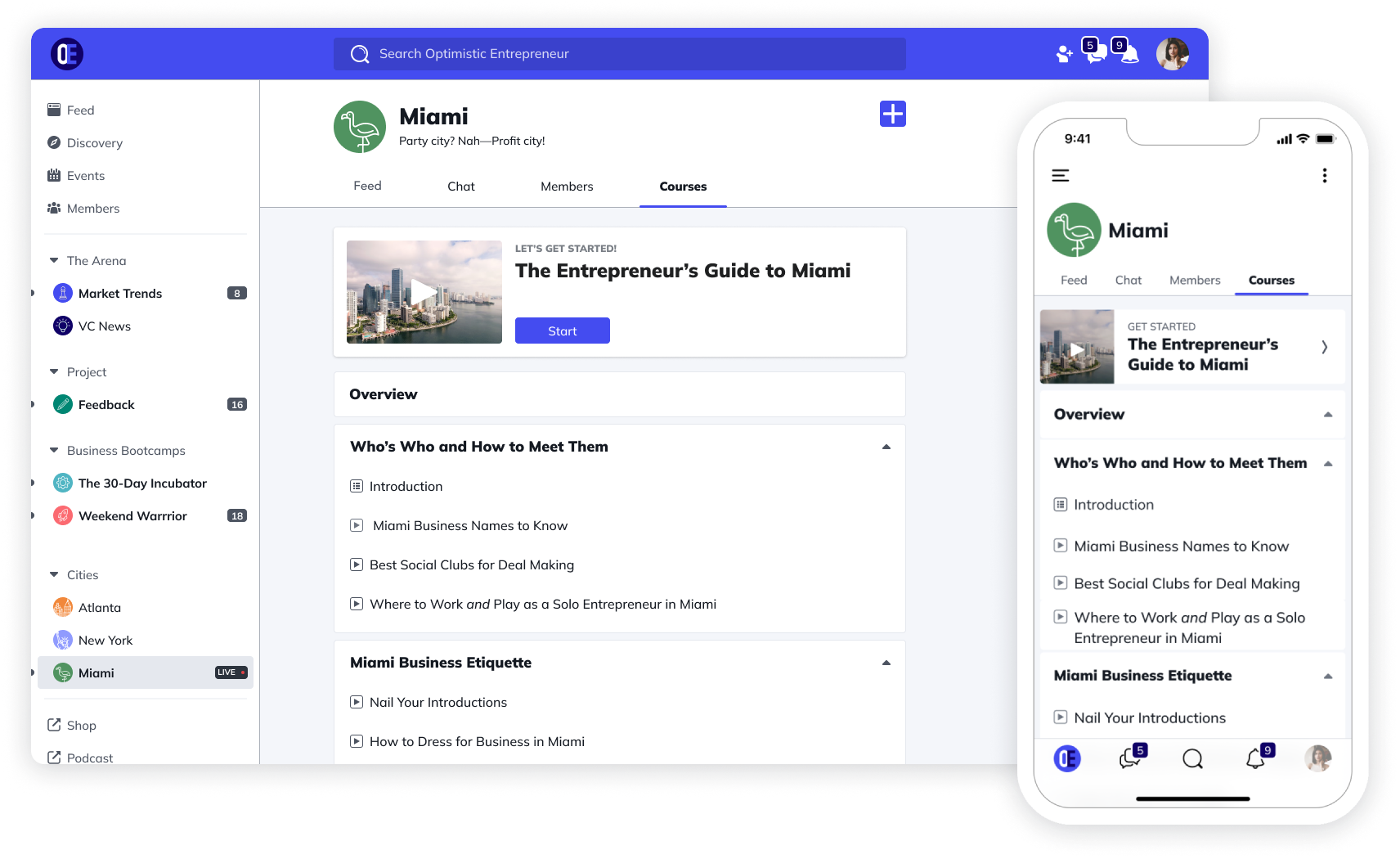
You could even interview a guest speaker to switch things up. Surprise, delight, and stimulate your members, so they’ll want to engage with content, other members, and you.
One final thing, you can mix it up in terms of the course delivery method. Asynchronous courses are everywhere on the internet, and while there’s nothing wrong with them, what about trying a live course? It will help you stand out and help students engage!
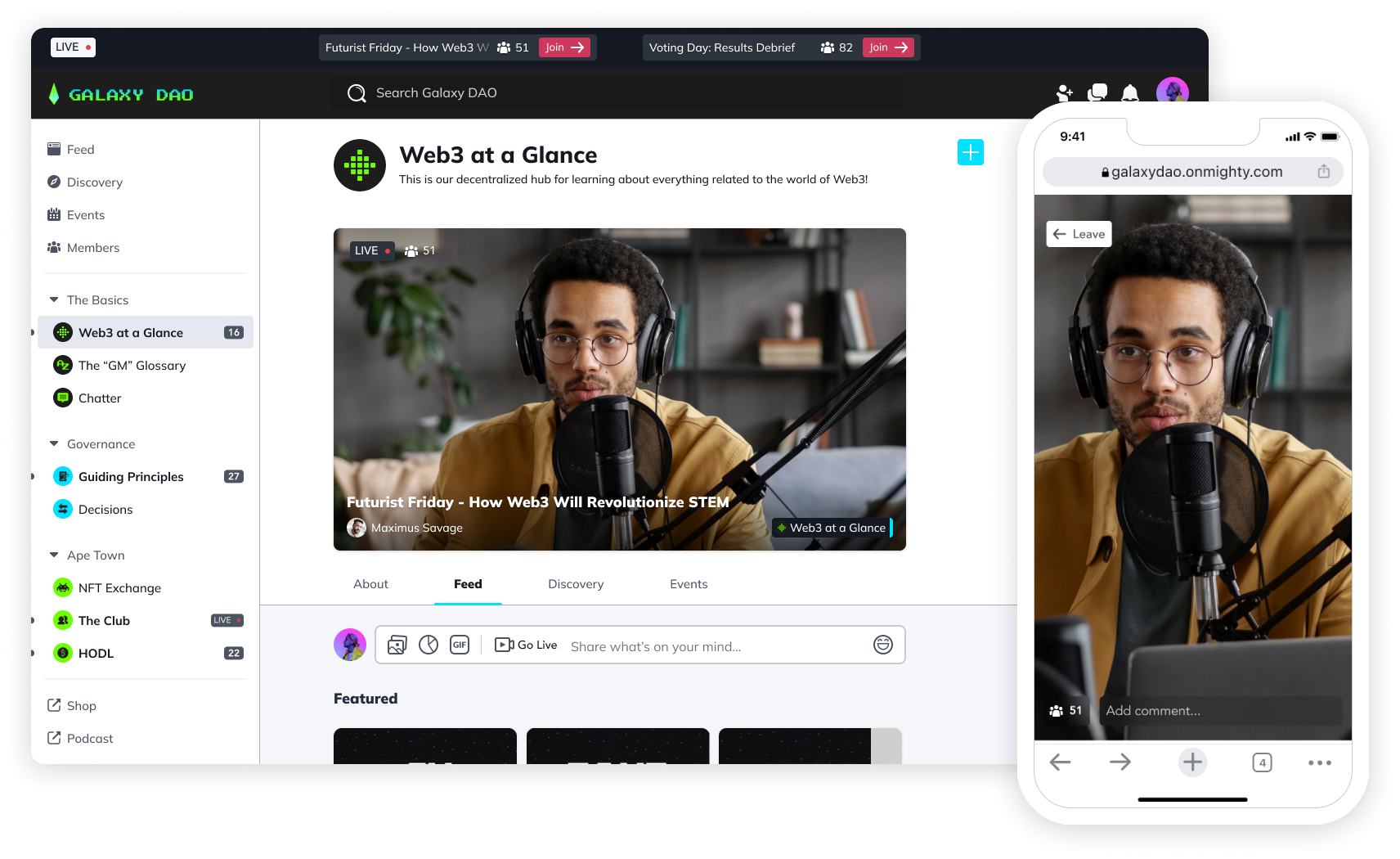
3. Determine the sweet spot for length
A course that’s too long will leave students feeling unmotivated and overwhelmed. They’ll drop off sooner, stop engaging with the content and ignore other members. They’ll make excuses like “I’m too busy” or “This course is taking up too much of my time” if your course is too long for the subject matter/goal.
On the flip side, if your course is too short, students will feel underwhelmed and unsatisfied. They might feel like it was a waste of time and feel frustrated because they weren’t able to obtain their goals in such a short period of time. If your course is too short, students might be thoroughly engaged with the content but not with you or other students (since they were so focused on the material).
That’s why you want to strike a balance and figure out what the best time frame is for your course.
How do we do this? Easy! Focus on the transformation you want your students to go through instead of the information. You probably know a lot about your subject matter. Resist the urge to tell your students everything you’ve learned. Instead, be really honest with yourself about what they ACTUALLY need to go from point A to B. That’s how long your course needs to be.
That’s why it’s important to think through who the ideal members are (their pain points, their goals, what they do), what would work best for them, and how much time they need in order to truly see results. Speaking of your members…
4. Make your students feel like VIPs
Don’t make your members feel like they’re just a number (or worse, a dollar sign). While your success and profitability does depend on your members, you still want them to feel special. Think about it. When you’re made to feel important, you’re more likely to enjoy the process and if you’re enjoying the process, you’ll want to engage.
One way to make your members feel extra special is by opening up your course early to a select few individuals (say the first 20 people to sign up) who you’ve personally reached out to. If they’re interested in being “the first ones to take the course” and want early access to your content, they’ll be quick to sign up for your course. Give them a special rate, and ask them for feedback.
Of course, you might get a range of students. There are always those who are eager to learn, fly through the course material, always participate in discussions and ask you questions. On the other end, there will be students who take their time (maybe even slower than the allotted amount/deadlines), occasionally engage with other members, and never ask questions.
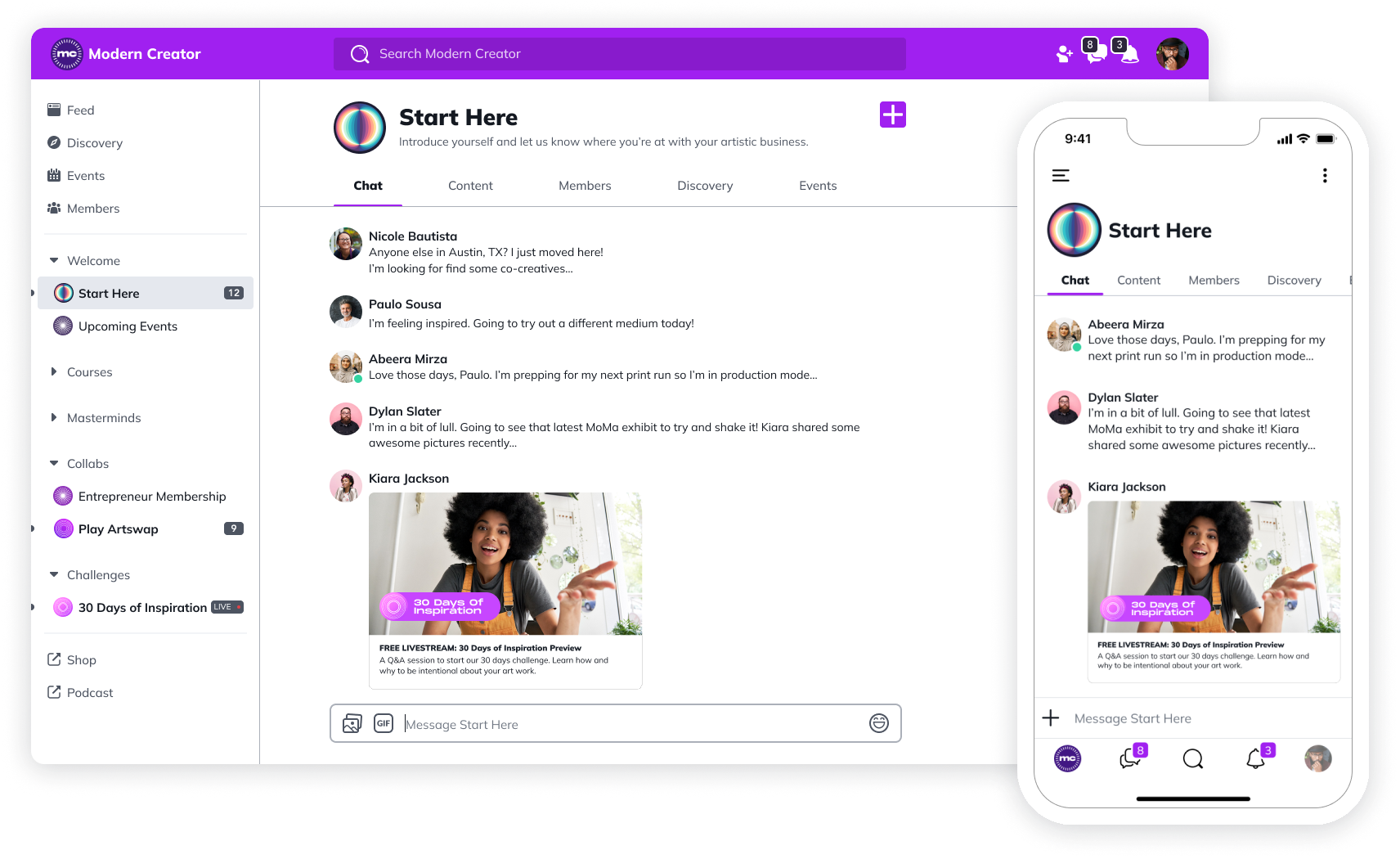
This range of engagement levels is to be expected. Continue checking with the students to see what aspects of the course they’re enjoying and what can be improved (e.g. amount of information provided, types of objectives set, allotted time given between each task). Are they finding the course too challenging or not challenging enough?
You could even provide an incentive for their feedback and publicly share their testimonial (if they feel comfortable with this) to your audience through social media, webinars, your website, etc. Showcasing their accomplishments will help you build a deeper connection with them and is proof of how valuable your course is.
Ultimately, if you’re interested in your members, they’ll be interested in you!
5. Choose the right platform
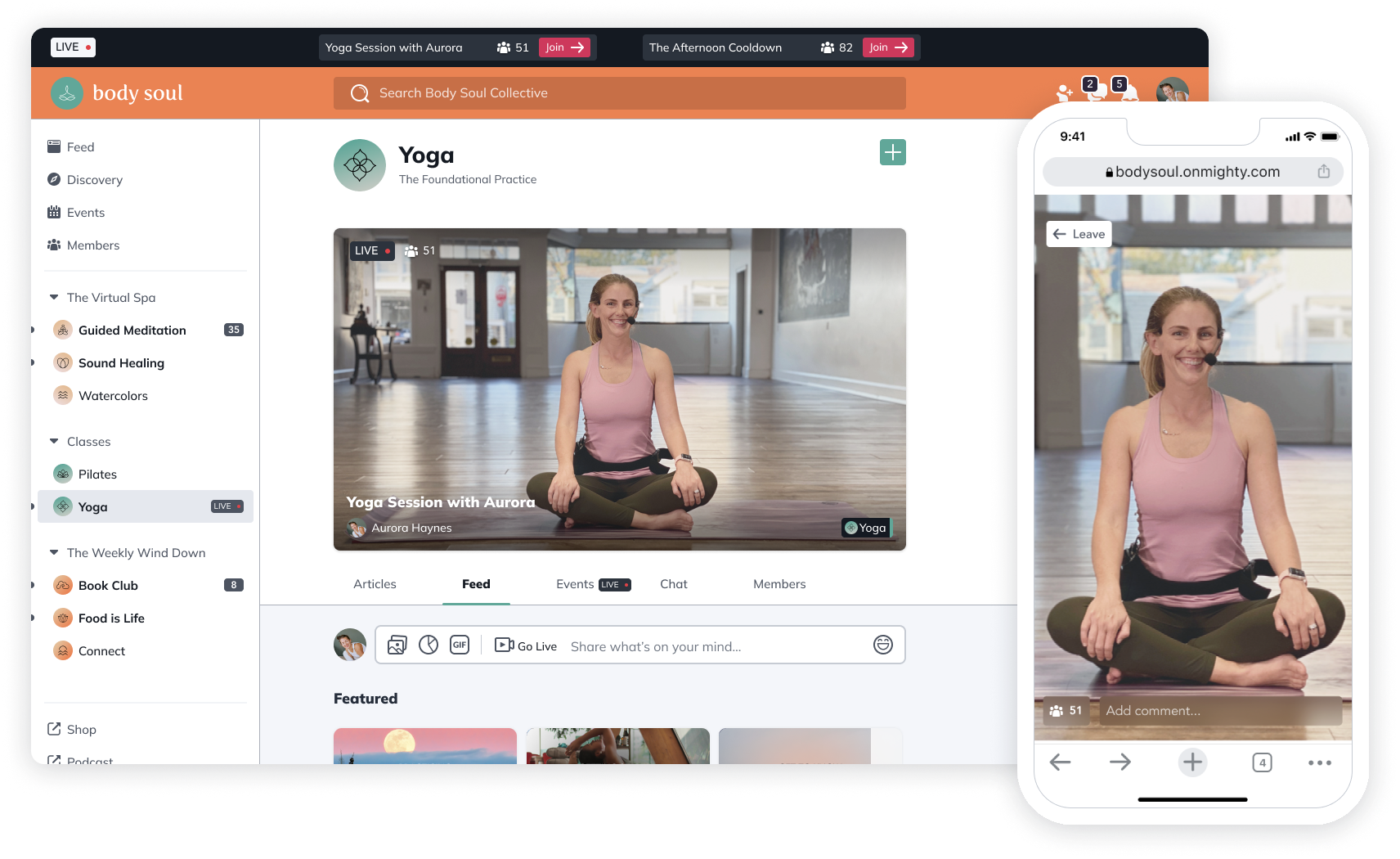
The tech you choose to build an online course is important. In Carly Walter’s story of launching Teach Music Online, she told us the impact of the platforms she chose on her success. At first, it was trying to stitch together a Facebook group, Teachable, Memberspace, and Squarespace and trying to move members between them.
She talks about how much moving to Mighty Networks opened up new value for her and her community:
When you have a platform that lets you mix course and community seamlessly together, you get the ability to deliver next-level value to your members. That’s why a good platform really is your partner in your online course business.
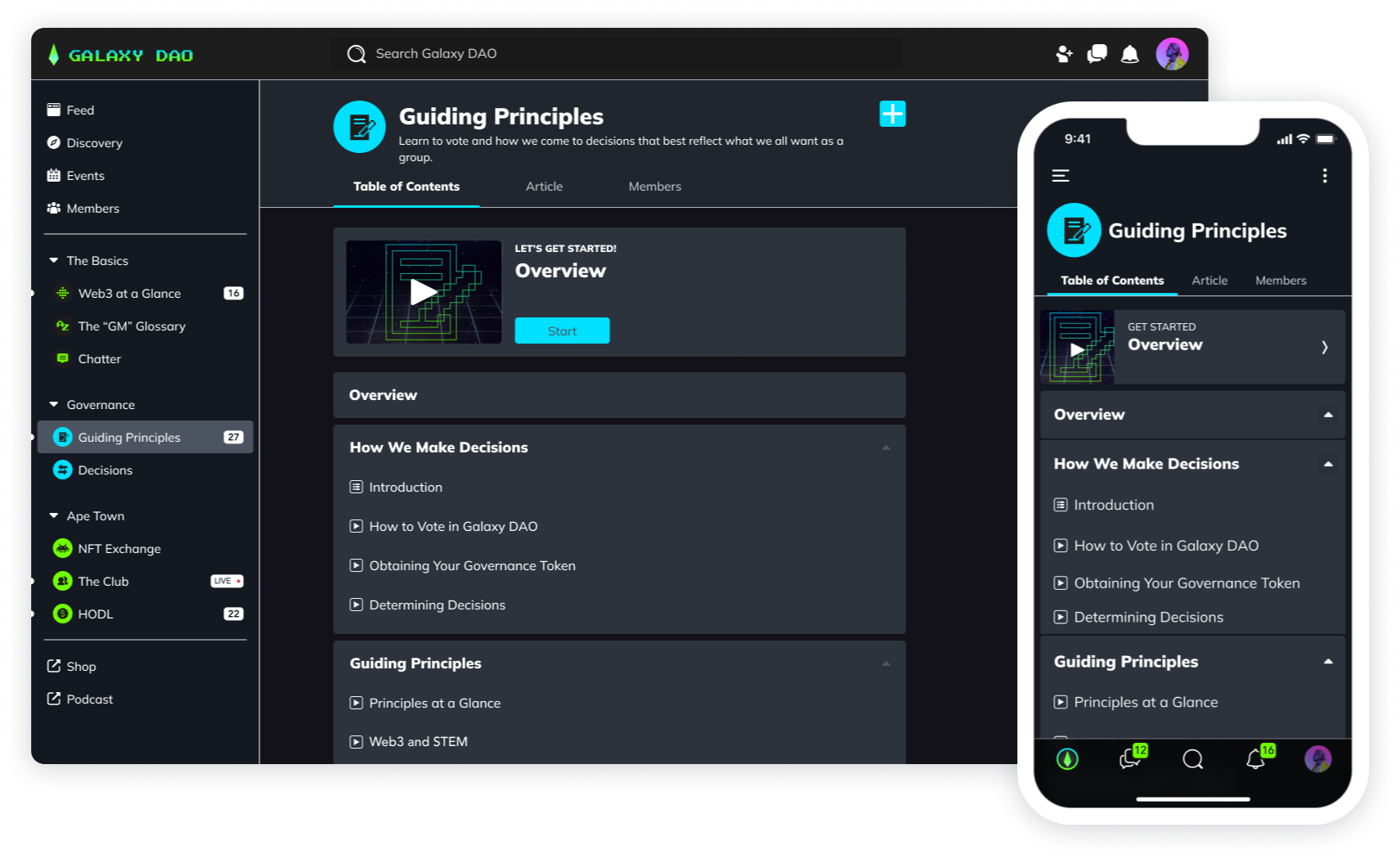
6. Be personable
Let’s talk about you — the creator. You might be used to doing a lot of the behind-the-scenes steps, but if you’re looking for your students to engage more with you, you have to be front and center. It’s important to not only get to know your members but for them to get to know you well.

You can do this by hosting live events, creating a blog, and sharing personal stories in the discussion board. Let your members in on who you are, not only as a leader but as a human, and they’ll be more likely to engage and open up.
By creating extra content like an article or hosting a live event in addition to your course, you’re showing a different side to your members, expressing new ideas, showcasing new skills, and can even promote upcoming content and courses.
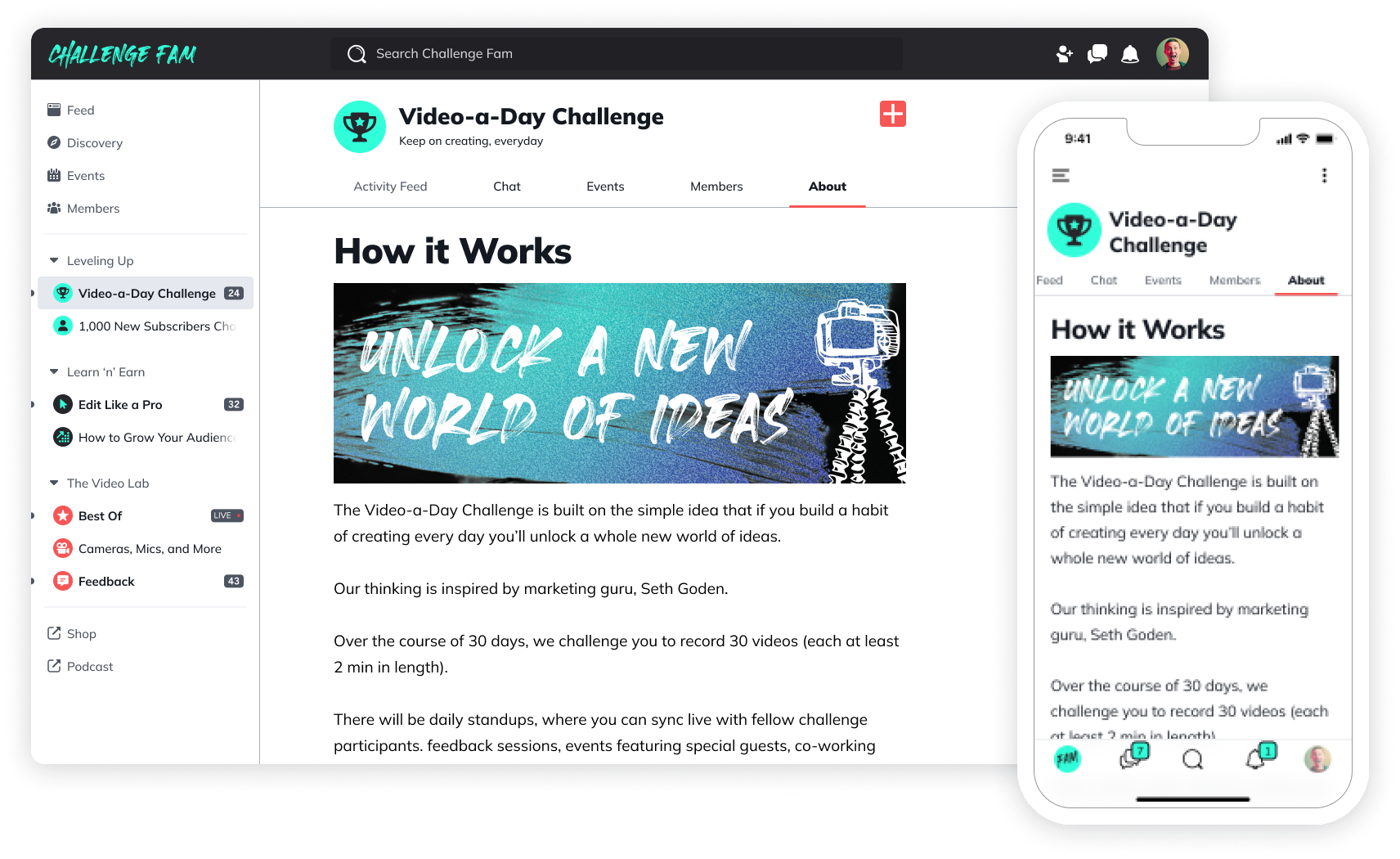
Essentially you are your brand and people connect to people, not companies.
7. Monitor discussions for a more supportive space
Getting students to open up and share their ideas in a safe and supportive environment is important. But that doesn’t mean you shouldn’t be monitoring what’s being posted.
When you lead a course, you’re also leading a community. That means staying active and up to date on not only how much your members are engaging but what your members are doing/saying. When you instill good moderation practices, you can keep the environment positive and judgment-free.
Not only that, but you can answer questions quickly when you moderate discussions. Your members will feel how much you care about their growth and will want to interact even more.
Wrap it up
Ultimately, engagement in online courses isn't just a recipe to follow. The best way to create engagement will always be to create your own culture. When you bring together courses with community, content, and commerce on an elegant cultural software platform, it gives you the power to send your engagement through the roof!
Too many course creators are trying a “build it and forget about it” approach, while we’ve seen first-hand the power of actually building a community to surround your students with. They’ll get more engagement, accountability, support, and ultimately be more successful at WHATEVER transformation your course offers.
And if you’re looking for an amazing place to build this online course and the community that goes with it, check us out. You can try Mighty Networks free for 14 days.
Ready to start building your online course and community?
Ready to start building your community?
Start a free 14-day trial to explore Mighty—no credit card required.
More like this
Join Mighty Community
Learn the principles of Community Design™ (and see them in action) alongside thousands of creators and entrepreneurs. It's free to join!

Online Courses
Creating a Course
Teaching a Course
Course Platforms
Selling a Course
Communities & Memberships
Community Platforms
Managing a Community
Building a Community
Growing a Community
Monetizing a Community
Content Creation
Creators & Entrepreneurs
Monetization
Content Creation
Starting a Business
Website Builders
Creating & Managing a Website
Events
Event Platforms
Hosting & Marketing Events
Branded Apps
Creating a Mobile App
Coaching Apps
Community Apps
Coaching
Mastermind Groups
Starting a Coaching Business
Coaching Platforms
Filter by Category
Online Courses
Communities & Memberships
Creators & Entrepreneurs
Events
Branded Apps
Coaching
Build a $1 Million Community
This free masterclass went viral—sign up to learn why.

























